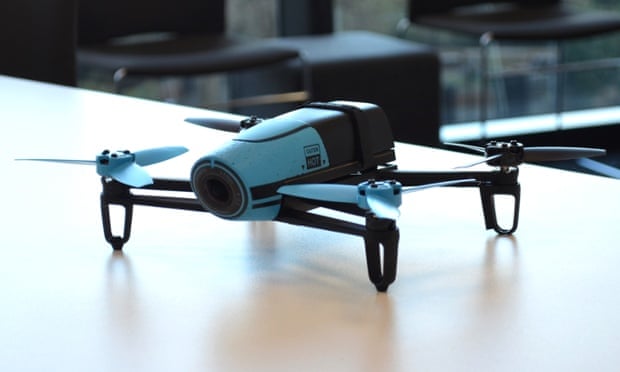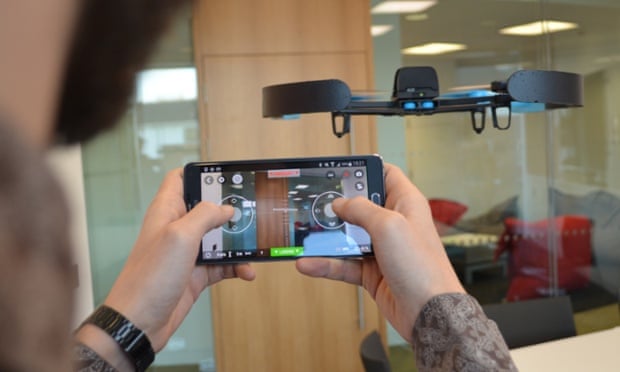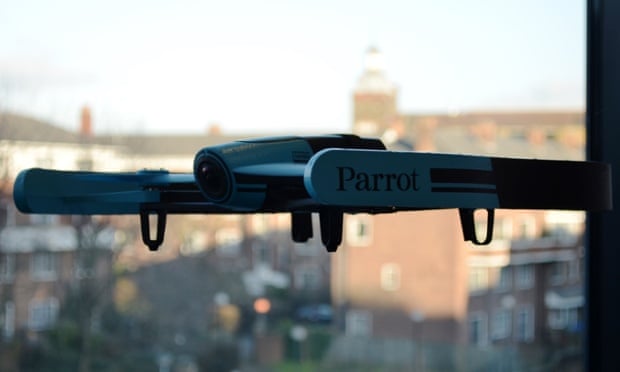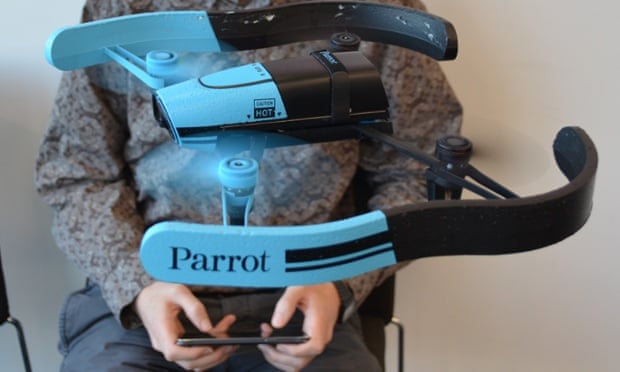A drone is an unusual choice, as far as Christmas gifts go. But last year, it was exactly what Dave Anderson wanted waiting for him under the tree.
Captain Dave Anderson is a naturalist and conservationist who runs whale-and dolphin-watching tours in Dana Point, California. Last year, his wife got him a drone for Christmas, and he has been using it to capture footage he wouldn’t have been able to get otherwise. He said in the past, if he wanted aerial footage, he either had to charter a helicopter — which, besides being prohibitively expensive, were noisy enough to disturb the animals if you got too close — or call the local news and ask them to take their helicopter out and then “beg them for the footage.”
Now, he regularly takes his drone camera out over the water, and uploads the results to his YouTube channel.
“Drones are changing how we view wildlife. It’s changed how I view it. I’m seeing things I’ve never seen before,” Anderson told Fusion.
“I’ve been whale-watching for 20 years,” Anderson continued. “In my first year, I saw a lot. But over the last 19 years, I haven’t seen as many new behaviors as I’ve seen in just the last year with this drone. It’s amazing.”
Like any new technology, flying a drone comes with some risks — especially when you’re using them over open water. Anderson has lost two drones to Davy Jones’ locker in the past year.
(In one instance, a software update programmed the drone to automatically return to its charging base when it reached 30 percent of its battery life. Unfortunately, the drone reached this threshold while Anderson was using it out on his boat. The base was back on land. The manufacturer apologized and sold him a replacement at half price.)
So: Tracking and saving endangered animals. Transporting organs for transplant. Farming. Mapping. Cinematography. Photography. Delivering pizza. The future is here, and it’s a remote-controlled flying robot.
Drones are generally thought of in the United States as tools of war, but enthusiasts are encouraging people to consider the many potential applications of unmanned aerial technology. Recently, they got together to talk about all the ways drones can improve the world.
In December, several hundred photographers, conservationists, engineers, and other aficionados gathered at the Los Angeles Memorial Sports Arena for the LA Drone Expo. Three dozen exhibitors showed off drones and drone-related accessories, including carrying cases, 3-D printers, cameras designed specifically for drone use, publications dedicated to the technology, and graduate programs in aerial engineering. A lineup of speakers and panelists, including Captain Anderson, presented their own drone footage and discussed how they used unmanned aerial vehicle technology in their business or passion. It was the first-ever commercial drone exposition.

The event was organized by the Unmanned Autonomous Vehicle Systems Association (UAVSA), which is part of the Tesla Foundation Group.
In other countries, drone technology is already being integrated into fields like healthcare, agriculture, entertainment, and search-and-rescue. Countries like India and England are looking into using drones to transport organ transplants, track endangered or dangerous animals, and deliver Amazon purchases. Cirque du Soleil taught them to dance. In the United States, we’ve been a little slower on the uptake. Jon Alvarez, the marketing director for the UAVSA, spoke with Fusion at the expo about why that is.
“The U.S. is the last market where we’ve had so much fear and miseducation about the product and drones to not implement that technology,” Alvarez said. But he understands: The first time he ever heard of a drone was in a CNN report about the war in Iraq.
“A lot of the applications (of drones) surprise people, because they think it’s only used for defense,” Alvarez said. “It’s not. It’s a tool that people can use to make the future better and make the world better.”

Right now, the UAVSA is working on building a community of both professional and casual drone users, as well as developing legislation to make sure drone usage doesn’t run afoul of FAA regulations. They’re also designing an app that would allow users to reserve airspace for commercial drone use.
Drones were available for purchase from several booths, starting at around $450. One booth showed off a drone that could be programmed to carry a disco ball around over your car as you drive. Another showed off an object avoidance program they were developing to keep drones from hitting things like trees, buildings, and other drones. (They did not immediately take us up on our suggestion to market it as a “drone Roomba.”)

The expo also inadvertently showed off the limitations of the technology. In the back of the convention space, there was an indoor area where you could try your hand at piloting a drone. An overeager participant flew it directly into the net, where it got stuck. Someone had to climb up on a ladder and use a big piece of cardboard to knock it back down to the ground, at which point the rotor broke, rendering flight impossible and the crowd (including this reporter) very disappointed.

Fusion asked Alvarez about one of the most pressing uses of drone technologies: How long until a drone will deliver us pizza?
“Within the next 5 years,” Alvarez predicted. “Within the next 10 years, drones will be a common sight.”
Source: http://fusion.net/story/35722/drones-could-change-life-as-we-know-it-in-america-once-we-get-over-our-fear-of-them/?utm_source=twitter&utm_medium=social&utm_campaign=socialshare&utm_content=desktop%2Btop&utm_campaign=naytev&utm_content=554d4d1de4b0892017de2501







































